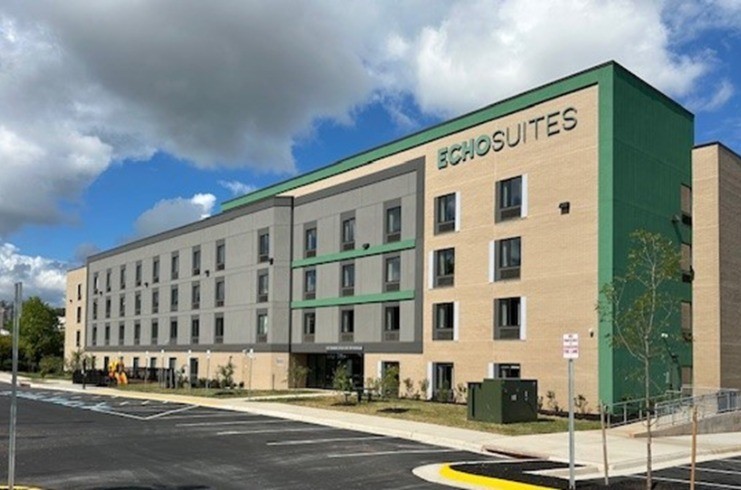
Lamont’s Panic Button Technology Evaluation Process
In evaluating AAD solutions, Lamont quickly realized that, in addition to ensuring location accuracy and ease of use, the panic button would need to function and effectively communicate with security systems in buildings with thicker walls. A fair number of Lamont hotel businesses are housed in historic buildings that have been renovated to provide guests with a modern experience. However, many of these facilities still retain appealing structural and design elements of their original construction, including thick walls made of sturdy materials—impeding the effective distance and reception of cell phone signals, location tracking, and other radio frequencies. Lamont needed a panic button solution that would offer signal redundancy and ensure reliable communication with all hotel staff in the event of an accident or violent incident.
In addition to physical facility considerations, Lamont had to meet Marriott’s technical criteria for deployed AAD technology. The panic buttons would also need to integrate with hotel security systems and software to trigger appropriate lockdown procedures and emergency responses based on the severity of an incident, as well as the potential risk to staff and guests on the property.
Panic Button Implementation Strategy & Solution Capabilities
To identify an appropriate technology solution, which would comply with Marriott’s requirements and enhance the protection provided to workers across hotel properties, Lamont turned to Intrado. The deployed panic buttons are equipped with either Bluetooth beacons to facilitate communication in older buildings, or Wi-Fi connectivity for newer facilities. Lamont also established LTE/cellular connectivity via SIM chips in their workers’ panic buttons, ensuring signal redundancy regardless of where staff are located during any on-premise incidents.
When a worker experiencing a safety incident triggers their wearable panic button, Lamont’s security system initiates an Intrado Safety Shield alert. This immediately notifies hotel managers, front desk personnel, as well as any workers who are at risk of being impacted by an incident. The alert does not trigger an auditory or visual alarm that could frighten guests, allowing staff to assess the situation at hand and enact an appropriate response based on the threat level. This allows employees in housekeeping and guest services to feel secure with the knowledge that help is moments away in the event of a violent encounter or incident, without causing a panic among guests that could impede emergency responses or impact worker safety.
Not only do Lamont’s workers feel safer on the job, they have an increased level of trust in their employer. Knowing that their safety is prioritized and that Lamont took proactive measures to ensure their protection has led to improved morale and retention as well as reduced turnover.
Recommendations for Hospitality Technology Executives
Other hotel companies and organizations interested in deploying panic buttons, or at the very least improving worker safety with innovative technology solutions, should start with a thorough assessment of their facility infrastructure, including existing security systems and measures, as well as physical limitations that could impact the efficacy of a worker safety solution. Those in charge of older or repurposed properties should anticipate a slightly longer deployment time. Historic buildings weren’t originally constructed with technologies like Wi-Fi, Bluetooth or cell phones in mind, and certain structural designs or materials can cause issues with connectivity and communication.
It’s also critical to include staff representatives in the solution selection and implementation process. This provides a dual advantage: a better understanding of the safety risks workers face on a regular basis, as well as a means of testing and troubleshooting potential solutions and deployment strategies before a major investment is made.
Creating a Culture of Security Among Hospitality Leaders & Workers
Lamont’s success in leveraging panic button technology has led to the upcoming expansion of Intrado Safety Shield deployment across the hotel chain’s properties. In addition to corporate mandates, regional legislation in certain states and major cities are driving other hospitality companies to enact similar measures to ensure the safety of their staff and guests.
Regardless of corporate mandates or legislative requirements, it’s every employer’s duty to protect the staff and guests who expect to work and stay in a safe, non-threatening environment. Ensuring the safety of employees and guests isn’t simply an issue of compliance, its an innate responsibility for all hotels and their leadership teams.
ABOUT THE AUTHOR
Austin Des Lauriers is the General Manager of Lamont Companies, a first-rate, multi-unit hotel management, and development company. The team at Lamont offers full, turnkey real estate development, management, investment, construction, and procurement services catering to the hospitality industry.









